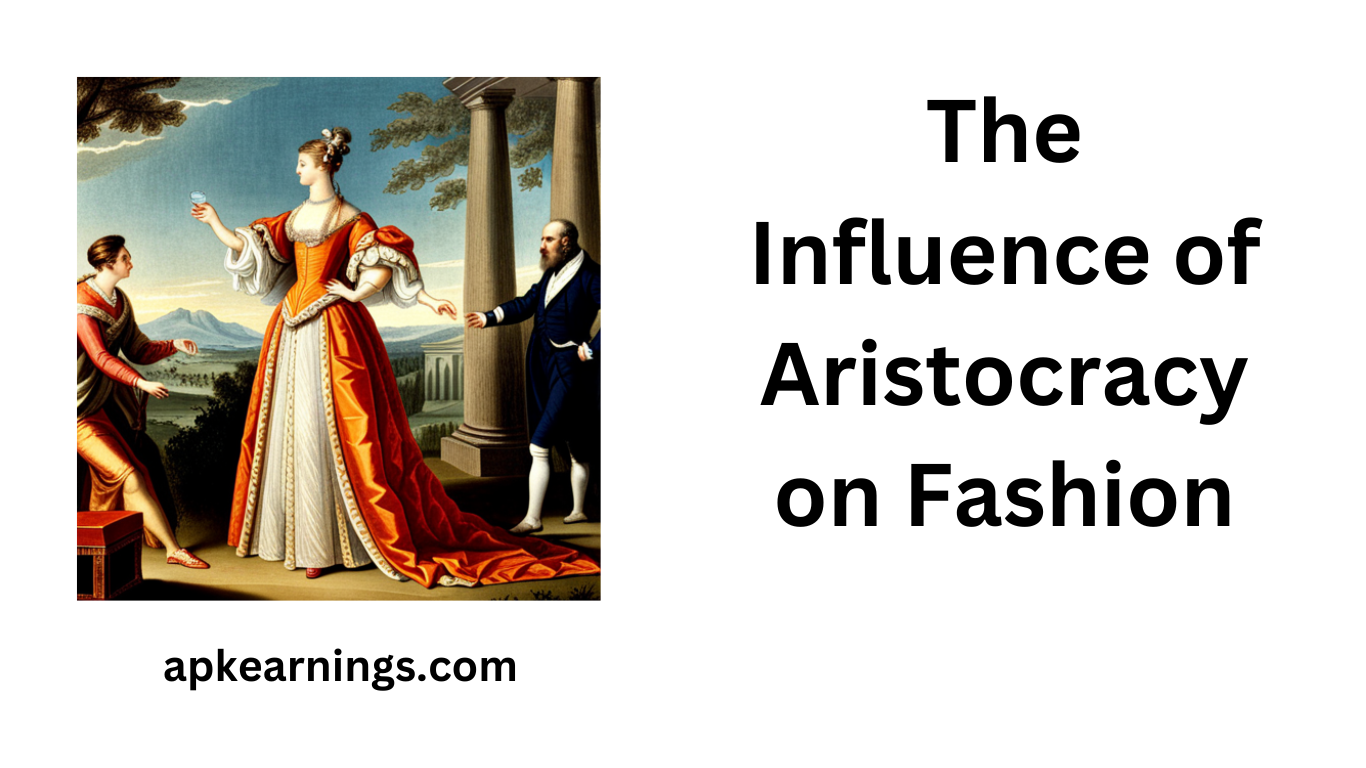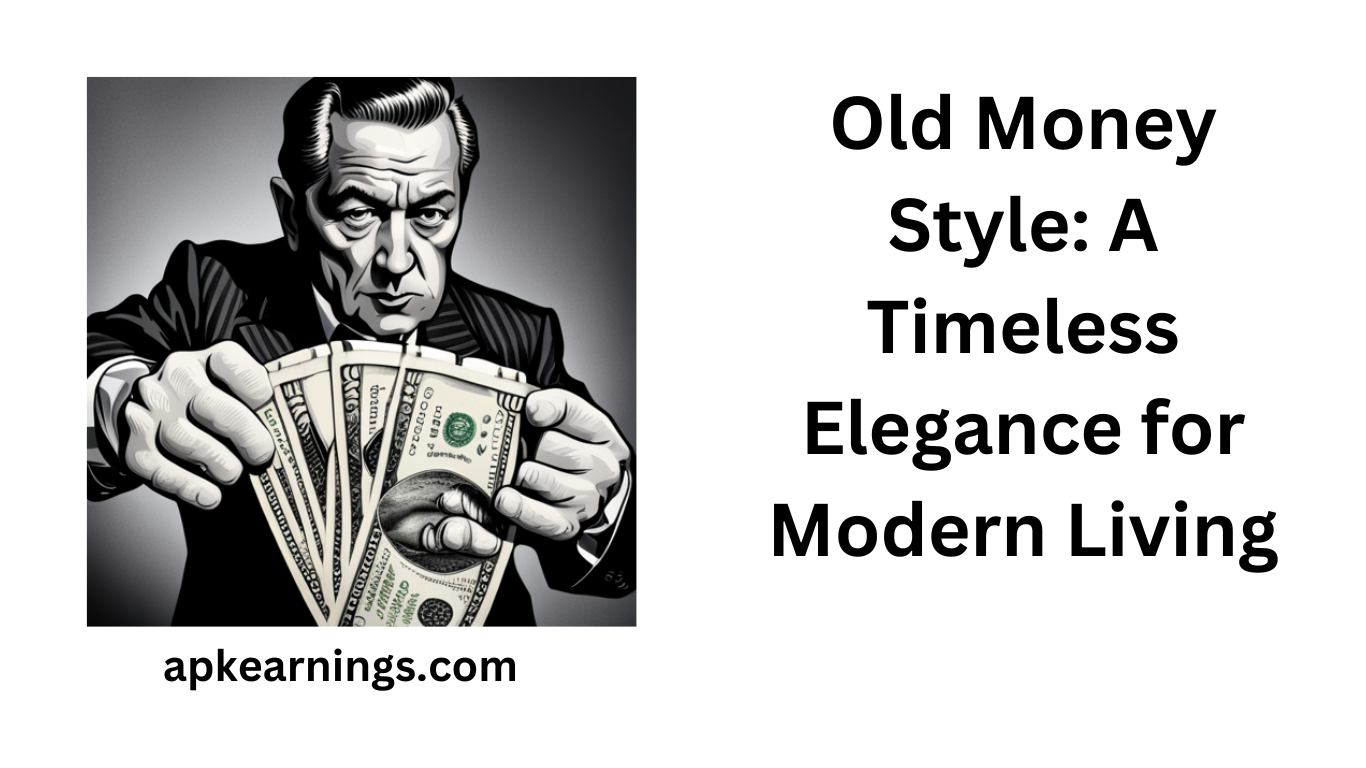The History Behind Old Money Style
The mystique and allure of old money style is deeply rooted in its enigmatic history, a captivating tapestry woven through the upper echelons of society. It emerged at a time when prosperity and prestige were indistinguishable, an era where the elite class utilized fashion as a resplendent canvas to exhibit their privileged lifestyles. The term “old money” signifies those esteemed families who have inherited riches and societal stature across generations, their sartorial choices embodying an understated yet exquisitely refined elegance. From the ornate opulence of Victorian-era fashions to the iconic styles that characterized the dawn of the 20th century, old money style has gracefully evolved while steadfastly upholding its unwavering devotion to quality craftsmanship and storied heritage.
In its nascent days, old money style found inspiration from European aristocracy, particularly drawing influence from Britain’s upper crust. This exclusive coterie dictated fashion trends with their impeccable tailoring, sumptuous fabrics meticulously chosen for finesse, and unwavering attention to minutiae. The breathtaking splendor witnessed within regal courts and grandiose social gatherings played an instrumental role in shaping the aesthetics synonymous with old money style. Luxurious materials such as silk cascaded like liquid gold; velvet enveloped one in decadence; fine wool cocooned bodies with unparalleled comfort—a trinity forever interwoven with wealth and privilege itself. Discriminating connoisseurs of taste among those adorned by old money reveled in showcasing their discerning refinement by carefully handpicking only the most superior fabrics befitting their garments’ elevated status—be it tailored suits for men or elegant gowns adorning women—always striving towards eternal gracefulness steeped in sophistication beyond measure
The Influence of Aristocracy on Fashion

The aristocracy, an age-old driving force behind fashion trends, has exerted its perplexing influence throughout the annals of history. Their exalted wealth and social stature have granted them the power to dictate what is deemed fashionable and stylish. This dominance manifests itself in various sartorial elements – clothing styles, fabrics, and accessories – which have become veritable emblems of luxury and refinement.
An indispensable manner by which the aristocracy has shaped fashion revolves around their discerning selection of elegant fabrics and materials. The upper echelons have long bestowed favor upon silk, satin, and velvet for their opulence that knows no bounds; these sumptuous textiles not only evoke a sense of grandeur but also embrace an unparalleled feeling of extravagance. Furthermore, they have embraced furs – sable and mink in particular – as beacons denoting prodigious affluence. By employing these superlative materials with utmost finesse, one not only conveys a certain level of prosperity but also imbues any ensemble with an air of sophistication that transcends time itself. Over countless centuries, this predilection for plush fabrics from the aristocratic class has permeated society at large as individuals aspire to emulate their regal elegance and prestige.
Traditional Clothing and Accessories of Old Money Style
The enigmatic allure of old money style lies in its unwavering commitment to tradition, an emphasis on impeccable quality, and the artistry that goes into every creation. Time-honored garments and accessories are indispensable cornerstones of this eternal fashion aesthetic. When it comes to clothing, old money style reveres classic silhouettes that stand the test of time – tailored suits for men exude a refined air while well-tailored dresses and skirts grace women with elegance. Crafted from opulent fabrics like wool, cashmere, and silk, these pieces bestow a lavish touch upon the overall ensemble. Accessories too hold great significance within old money style; leather shoes stride with sophistication alongside sumptuous handbags and statement jewelry that elevate any outfit.
Yet beyond clothing and accessories lie specific emblematic items intertwined with the essence of old money style. For gentlemen seeking sartorial excellence, a flawlessly fitted blazer in neutral hues such as navy or charcoal gray is an absolute necessity. Paired seamlessly with tailored trousers and a crisp white shirt, this ensemble oozes classiness whilst radiating sophistication in abundance. Conversely, ladies often gravitate towards timeless elements like pearl necklaces delicately adorning their necks or silk scarves draped gracefully around their shoulders – all complemented by structured leather handbags that epitomize poise at its finest. These cherished heirlooms not only infuse outfits with regality but also symbolize heritage and elevated social standing.
By incorporating these age-old garments and accessories into one’s personal wardrobe selection, individuals can effortlessly embrace the very essence of old money style while capturing the nostalgic charm reminiscent of eras past.
Elegant Fabrics and Materials of Old Money Style

The allure of Old Money style lies in the perplexing array of sumptuous fabrics and materials that compose its essence. Silk, cashmere, and tweed are just a glimpse into this world of opulence and sophistication. These luxurious textiles have long been intertwined with wealth and refinement, paying homage to tradition.
Silk, with its mesmerizing smoothness and shimmering facade, injects an air of grandeur into every article it graces. From blouses to dresses, silk exudes elegance and grace, allowing the wearer to embody the refined aesthetics synonymous with Old Money style.
Cashmere stands in stark contrast as a testament to softness and warmth – an ideal companion for snug sweaters or cozy cardigans. Its natural fibers possess an ageless appeal while effortlessly draping over any silhouette; a perfect marriage between comfort and timeless fashion.
And then there is tweed – a fabric steeped in history that evokes visions of British aristocracy. Its textured surface whispers tales from bygone eras while maintaining its sturdy nature. Tailored jackets and skirts crafted from this classic material epitomize the enduring sophistication associated with Old Money style.
But let us not forget leather’s role within this realm of elegance – renowned for both its durability and allure. Luxury handbags, belts, or shoes made from this adaptable material add a touch of refinement to any ensemble with their natural grain and smooth finish.
Fur also plays a significant part in defining Old Money style despite being embroiled in controversy within modern fashion circles. Historically used as symbols of status among the affluent elite, fur lends itself splendidly to richly embellished coats, stoles, or accessories – bestowing upon them an undeniable sense of glamourous extravagance.
Lastly but certainly not least are pearls – revered as the “queen of gems” throughout centuries past for their symbolism encompassing purity and sophistication. In adherence to Old Money style traditions these lustrous orbs are often worn as necklaces, earrings, or bracelets, effortlessly infusing any ensemble with timeless elegance.
Deep within the realm of Old Money style lies a celebration – not only of wealth and standing but also an ode to everlasting grace and refinement.
The Significance of Tailoring in Old Money Style
The bewildering importance of tailoring in the realm of Old Money style lies within its remarkable capacity to fashion a transcendent and polished aesthetic that exudes an air of sophistication and elegance. Tailoring assumes a pivotal role in attaining an impeccable fit and structure, qualities that are inherently characteristic of the esteemed Old Money style. The painstaking attention to intricate details throughout the tailoring process ensures garments cascade flawlessly upon the wearer’s body, augmenting their silhouette and engendering a sublime appearance.
Within the realm of Old Money style, tailoring transcends mere creation of well-fitted attire; it represents an investment in exquisite craftsmanship destined to endure through time’s relentless passage. The assiduous techniques employed during construction bestow durability upon these garments, enabling them to retain their form even after enduring years of wear. This unwavering commitment to unparalleled quality serves as a testament to the discerning taste and profound appreciation for superlative craftsmanship that epitomizes the hallowed halls of Old Money style. Whether one dons an impeccably tailored suit or indulges in a bespoke dress, one must not underestimate the resounding significance bestowed by tailoring when seeking to embody all-encompassing sophistication and refinement emblematic of Old Money tradition.
Timeless Fashion Icons and their Impact on Old Money Style
![]()
The realm of timeless fashion icons has undeniably held a pivotal role in the formation and evolution of what we know as old money style. Their impeccable sense of fashion and refined taste have left an indelible mark on the world of haute couture, effectively molding the way individuals with old money flaunt their attire and present themselves to society. These iconic figures possess an innate ability to effortlessly encapsulate elegance through their choice of classic ensembles that exude grace, refinement, and an air of sophistication.
Among these extraordinary beings stands Audrey Hepburn, whose enduringly stylish presence continues to inspire countless generations. Renowned for her understated yet captivating outfits, she single-handedly popularized garments such as the little black dress, crisp white shirts, and ballet flats – all now synonymous with the trappings of wealth passed down through generations. Hepburn’s minimalistic approach towards fashion emphasized clean lines, opulent fabrics curated with utmost care for quality craftsmanship along with a meticulous attention to detail – attributes that are intrinsic in defining old money style itself. Even today, her profound influence can still be witnessed as women strive relentlessly to replicate her ageless aesthetic grounded in timeless refinement.
The Role of Etiquette and Manners in Old Money Style
Etiquette and manners hold a profound sway in the realm of old money style, embodying the bewildering and unpredictable essence of those fortunate enough to belong to the upper echelons. Genteel conduct and flawless social comportment not only serve as tools for upholding societal harmony but also function as ostentatious symbols of affluence and stature. Within the realms of old money circles, proper etiquette is deeply ingrained from an early age, with young ones being taught the paramount importance of cordial salutations, impeccable tableside decorum, and respectful communication.
A fundamental facet of old money style lies in its ardent emphasis on courtesy and deference towards others. Whether partaking in high-society gatherings or engaging with individuals in mundane settings, those who epitomize this refined aesthetic are renowned for their magnanimity and thoughtfulness towards others. This encompasses employing polite language, adhering to meticulous dining rituals, and presenting oneself with commendable posture and immaculate grooming. Through adherence to these lofty standards of etiquette, individuals belonging to old money heritage signify their unwavering commitment to timeless values while firmly establishing themselves within a sphere defined by exclusivity and sophistication.
Old Money Style: A Reflection of Wealth and Status
The enigmatic allure of Old Money Style goes far beyond being a mere passing trend; it is an embodiment of affluence and social standing. Those who wholeheartedly embrace this style exude an air of sophistication and grace that can only be acquired through generations of privilege and cultivation. Every aspect, from their sartorial decisions to their meticulously tailored ensembles, is painstakingly curated to convey a sense of opulence and prestige.
An integral facet that epitomizes the connection between Old Money Style and wealth/status lies in the selection of fabrics and materials. The preference for high-quality textiles like cashmere, silk, and exquisite wool serves as a testament to the wearer’s ability to invest in enduring pieces that exhibit both durability and luxury. Far more than just enhancing the overall aesthetic appeal, these sumptuous materials signify exclusivity and prosperity synonymous with Old Money Style.
Furthermore, meticulous tailoring plays a pivotal role in conveying affluence and status within Old Money Style outfits. Each garment is skillfully fashioned to fit the individual flawlessly while accentuating their physique’s unique contours and proportions. Whether it entails the precision cut of a suit or the impeccable drape of a dress, such fastidious attention to tailoring bespeaks not only an acute eye for detail but also an unwavering dedication towards presenting oneself in polished refinement.
Delve into our comprehensive article further where you will unearth invaluable insights on seamlessly incorporating Old Money Style into your wardrobe—whether you are working within budget constraints or eagerly seeking to embrace this timeless fashion choice.
How to Incorporate Old Money Style in Modern Fashion
When it pertains to infusing the antiquated essence of wealth into contemporary fashion, there exists a handful of crucial facets that must not be overlooked. Above all else, the paramount aspect lies in wholeheartedly embracing enduring and ageless articles. Seek out garments boasting unadorned contours, unfussy silhouettes, and hues of neutrality. The foundation of your ensemble should consist of classic wardrobe essentials akin to impeccably tailored blazers, immaculate white shirts, and precisely fitted trousers.
Furthermore, alongside apparel selection lies an imperative focus on accessories and minutiae. Intrinsic to old money style is an unwavering devotion to quality craftsmanship; therefore, gravitate towards embellishments fashioned from superior materials such as leather exuding opulence or silk radiating refinement – even gold evoking grandeur. Opt for timeless adornments like a rigidly structured leather handbag reminiscent of eras past or perhaps a strand of lustrous pearls symbolizing gracefulness; alternatively consider adorning your wrist with a traditional timepiece embodying elegance through its simplicity. Maintain an aura that exudes sophistication and cultivated poise by resolutely eschewing ostentatious or fleeting trinkets for true affluence is discreet in nature while epitomizing refined allure through understatement par excellence
Tips for Embracing Old Money Style on a Budget
When endeavoring to embrace the esteemed old money style without depleting your funds, a plethora of tips can guide you towards achieving a sophisticated and ageless appearance. Primarily, immerse yourself in thrift stores and vintage shops, where an abundance of hidden treasures awaits – high-quality and timeless pieces at affordable prices. Seek out items such as meticulously tailored blazers, structured handbags, and classic footwear like loafers or ballet flats. These everlasting articles possess the remarkable ability to effortlessly elevate any ensemble while emanating that coveted old money allure.
Moreover, prioritize investing in fabrics and materials renowned for their opulence and timelessness. Direct your attention towards items crafted from natural elements like wool, silk, or cashmere – substances revered for their durability and lavishness. Opt for neutral shades or traditional patterns such as houndstooth or plaid; they exude versatility and seamlessly harmonize with other components within your wardrobe. By channeling discernment towards quality craftsmanship, you shall forge an exquisite collection of attire that radiates refined elegance synonymous with old money style – all this while adhering to budgetary constraints with unwavering commitment.
What defines old money style?
Old money style, an enigmatic and captivating fashion and lifestyle aesthetic, captures the essence of opulence passed down through generations. Its allure lies in its perplexing combination of timeless elegance, understated luxury, and a relentless pursuit of quality over quantity.
What is the intriguing history behind old money style?
The origins of old money style can be traced back to the aristocracy and upper classes that reigned supreme in 18th and 19th-century Europe. It emerged as a tool for these elites to distinguish themselves from the ostentatious nouveau riche while showcasing their refined stature and impeccable taste through clothing choices and genteel manners.
How does the aristocracy exert influence on fashion within old money style?
Within the realm of old money style, no power rivals that of the influential aristocracy. Their discerning preferences and steadfast adherence to traditional values breathe life into classic elements permeating this fashion genre. Tailored suits exuding sophistication, elegant dresses radiating gracefulness, along with high-quality fabrics are all products shaped by their refined sensibilities.
Which articles of clothing and accessories personify traditional old money style?
Inextricably linked to traditional old money style are iconic garments such as impeccably tailored suits for men or graceful dresses for women. Complementing these attire choices are pearl necklaces adorning necks with subtle splendor, silk scarves delicately draped around shoulders embodying refinement, leather loafers offering both comfort and classiness beneath feet, as well as elegant hats topping off ensembles like exquisite crowns. These items epitomize timelessness while evoking awe-inspiring bursts of admiration.
Which exquisite fabrics dominate within old money style’s realm?
Luxurious fabrics possess an intoxicating allure within the domain ruled by old-fashioned wealth known as “old-money”style. The regal touch of cashmere, the sensuous embrace of silk, the enduring strength of wool, and the breezy elegance of linen are all favored materials that not only clothe their wearers with comfort and endurance but also bestow upon them an air of refinement and sophistication.
Why does tailoring occupy a paramount position in old money style?
Within the intricate tapestry that is old money style, tailoring weaves its way to center stage. This art form ensures garments cling impeccably to one’s frame while accentuating individual body shapes with unparalleled precision. These exquisitely tailored pieces serve as beacons illuminating old money fashion’s attention to minute details and unyielding dedication to refinement.
Which timeless fashion icons have left indelible marks on old money style?
The realm of timeless fashion icons boasts illustrious figures such as Audrey Hepburn, Grace Kelly, and Jackie Kennedy who have imprinted their influential legacies onto the pages defining old money style. Their choices epitomize elegance interwoven with sophistication—qualities synonymous with this classic aesthetic embraced by those belonging to affluent circles.
What role do etiquette and manners play within old money style?
Etiquette and manners hold an integral place within the captivating world known as old money style. They mirror exquisite upbringings steeped in social codes meticulously crafted for those hailing from upper-class backgrounds. Politeness graced by graciousness, table manners adhering strictly to tradition, along with unwavering respect for established norms weave together into a tapestry embodying every essence found within this enigmatic genre.
How does wealth and status manifest through old money style?
Old money style transcends mere fabric draped over bodies; it serves as a potent symbol reflecting wealth’s undeniable influence coupled with elevated societal status. By emphasizing quality above all else alongside understated luxury radiating elegance, this fashion genre exudes an aura of sophistication and exclusivity intrinsically linked to the privileged upper class.
How can one incorporate old money style into modern fashion without breaking the bank?
Embarking on a journey to embody old money style within modern fashion’s realm even with financial constraints requires strategic choices. Key elements such as timeless silhouettes whispering secrets of bygone eras, classic colors reflecting enduring grace, and quality materials reminiscent of opulence can be procured through thrift store excursions. Furthermore, investing in versatile pieces capable of adapting to various ensembles while skillfully utilizing accessories allows for a budget-friendly exploration that still captures the desired aesthetic brilliance.
for more ……………. click here





